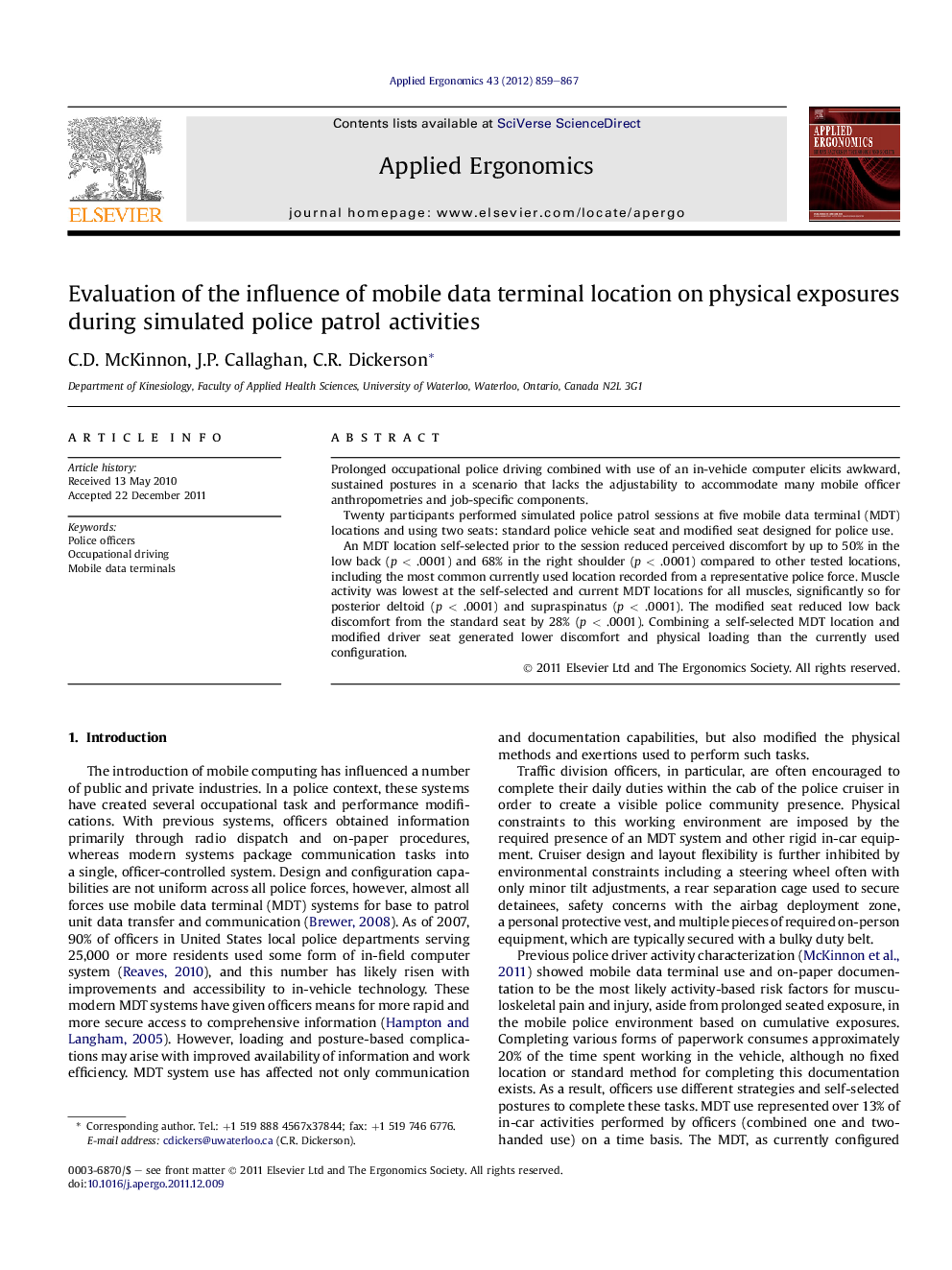| Article ID | Journal | Published Year | Pages | File Type |
|---|---|---|---|---|
| 551184 | Applied Ergonomics | 2012 | 9 Pages |
Prolonged occupational police driving combined with use of an in-vehicle computer elicits awkward, sustained postures in a scenario that lacks the adjustability to accommodate many mobile officer anthropometries and job-specific components.Twenty participants performed simulated police patrol sessions at five mobile data terminal (MDT) locations and using two seats: standard police vehicle seat and modified seat designed for police use.An MDT location self-selected prior to the session reduced perceived discomfort by up to 50% in the low back (p < .0001) and 68% in the right shoulder (p < .0001) compared to other tested locations, including the most common currently used location recorded from a representative police force. Muscle activity was lowest at the self-selected and current MDT locations for all muscles, significantly so for posterior deltoid (p < .0001) and supraspinatus (p < .0001). The modified seat reduced low back discomfort from the standard seat by 28% (p < .0001). Combining a self-selected MDT location and modified driver seat generated lower discomfort and physical loading than the currently used configuration.
